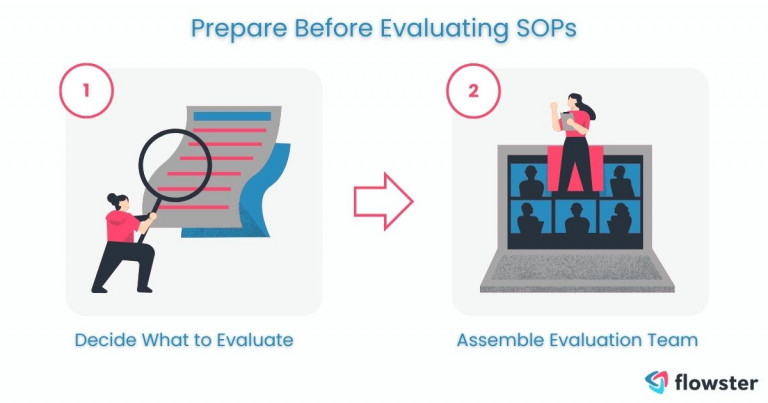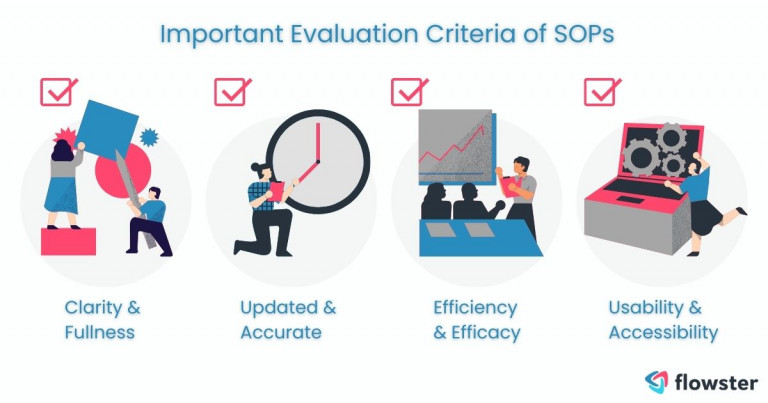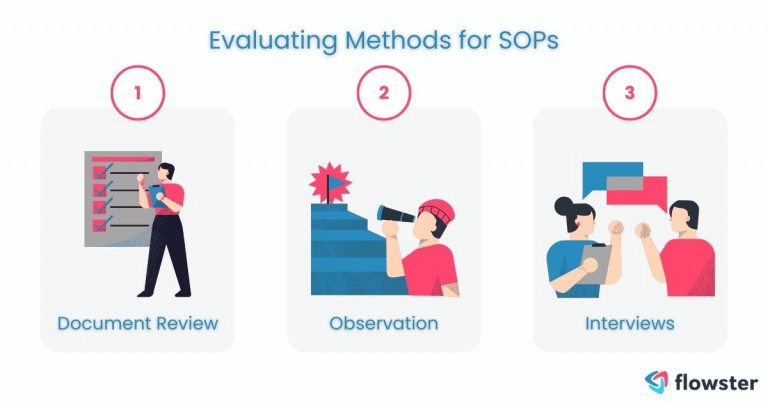Have you ever wondered why some organizations seem to operate like well-oiled machines, while others struggle with consistency and efficiency? A lot of it comes down to their standard operating procedures (SOPs). SOPs are essential for ensuring quality and uniformity in the execution of tasks.
However, just having SOPs isn’t enough. Regularly evaluating your SOPs is key to keeping them effective. In this article, we’ll guide you through how to evaluate standard operating procedures to ensure they contribute positively to your operations. Whether you’re in a medical practice, pharmaceutical service, or any field requiring consistent quality, stick around to learn how to keep your SOPs in top shape.
Article Outline
1. Preparing to Evaluate Standard Operating Procedures
Before diving into the evaluation of your SOPs, it’s crucial to lay the groundwork for an effective review process. This preparation phase involves deciding which SOPs to evaluate and assembling a diverse team to ensure a comprehensive approach to developing SOP.
A. Deciding What to Evaluate
Not all SOPs are created equal. Their importance can vary based on the risk and complexity they entail. It’s crucial to evaluate SOPs regularly, but how often should you do it? It depends on the SOP’s nature.
High-risk procedures in medical practices or pharmaceutical services might need more frequent reviews. Listen to feedback from your team and keep an eye on incident reports and regulatory changes to prioritize which standard operating procedure to evaluate first.
B. Assembling the Evaluation Team
Effective SOP evaluation is a team effort. Including a mix of users, supervisors, and quality control personnel ensures a comprehensive review. Their diverse perspectives can highlight different aspects of the SOP’s functionality and areas for improvement.
For a more in-depth evaluation, consider bringing in business process consultants. These experts can offer fresh perspectives and specialized expertise to refine your SOPs. For more insight into what these consultants do and how to decide if their services are right for your organization, read our article on “Introduction to Business Process Consultants and How to Determine If You Need One.”

2. Criteria to Evaluate Standard Operating Procedures
Establishing clear criteria is the backbone of effective standard operating procedures evaluation. These benchmarks, ranging from clarity and comprehensiveness to efficiency and usability, guide the data collection and analysis phases, ensuring that each SOP aligns with organizational goals.
A. Clarity and Comprehensiveness
An effective SOP should be like a good map: clear, detailed, and comprehensive. It should outline all necessary steps and contingencies, ensuring that users can follow it without confusion. Is your SOP easy to understand? Does it provide training support effectively?
B. Accuracy and Up-to-Dateness
SOPs need to keep pace with changing regulations, technologies, and practices. An outdated SOP can be more harmful than no SOP at all. Ensuring your SOP reflects current standards is crucial for maintaining consistent quality and compliance.
C. Effectiveness and Efficiency
An SOP’s ultimate test is in its results. Does following the SOP lead to the desired outcomes consistently? Are there steps that could be streamlined or made more efficient? Identifying these opportunities can significantly improve efficiency and customer satisfaction.
D. Usability and Accessibility
An SOP that’s hard to access or difficult to read is of little use. Evaluate whether your SOP is presented in a user-friendly format, including clear language and helpful visuals. Ensure it’s accessible to everyone who needs it to perform their specific tasks effectively.

3. Methods to Evaluate Standard Operating Procedures
Choosing the right evaluation methods is key to uncovering actionable insights. Through a combination of document review, observation, and interviews, we gather the necessary data to assess how well the existing SOPs serve their intended purpose and identify opportunities for more efficient SOP.
A. Document Review
Start with a thorough document review, checking the SOP against a checklist of your evaluation criteria. Don’t forget to review associated training materials and user feedback, which can provide valuable insights into the SOP’s practical application.
B. Observation
Observing employees as they follow the SOP can reveal a lot. Watch for deviations from the prescribed process and ask why they occur. Sometimes, the entire document needs adjustment to better fit real-world applications.
C. Interviews
Talking directly to those who use the SOP can uncover issues and areas for improvement that might not be obvious otherwise. Interviews with subject-matter experts can also provide deep insights into the SOP’s effectiveness and efficiency.

4. Analysis and Reporting Your SOP Evaluation
After collecting data through various evaluation activities, the next step is a thorough data analysis to distill insights from the information gathered. This process not only highlights the strengths and weaknesses of your SOPs but also guides the creation of a clear, concise report that outlines actionable recommendations for improvement based on the general SOP template and specific findings.
To further enhance your SOP development process after the analysis and reporting phase, leveraging modern technology can be a game-changer. Discover how in “Save Time and Money: How Technology Can Improve Your SOP Development,” where we explore innovative tools and practices that streamline SOP creation and maintenance.
5. Taking Action After Your SOP Evaluation
With a detailed analysis in hand, the focus shifts to prioritizing and implementing changes to enhance the effectiveness and efficiency of your SOPs. This involves revising the general SOP template where necessary, developing new procedures, and communicating these changes across the organization. Providing training for updated SOPs ensures that all team members are aligned and competent in their roles, closing the loop on the evaluation process.
As you implement changes to your SOPs, understanding and managing the change effectively is crucial. Learn more about navigating this process smoothly with our guide, “Master the Change Management Process: Steps, Tips & Free Templates,” which offers valuable insights and resources.
Transform Your Business with Flowster's AI-Driven Automation
Conclusion: Start Evaluating Your SOPs
Regular evaluation of your SOPs is crucial for maintaining high standards of quality and efficiency in any organization. A well-defined SOP evaluation process ensures that your procedures stay relevant, effective, and efficient, ultimately leading to improved customer satisfaction and business outcomes. Remember, the goal of evaluating your SOPs is not just to find faults but to seize opportunities for improvement and growth.
Struggling to Create SOPs?
Flowster makes it simple to create standard operating procedures using artificial intelligence, or you can browse our library of pre-built SOP templates in the Flowster Marketplace. These templates are designed to meet a variety of business needs and are easily customizable to meet your specific requirements.
Do you need help? Use our “Done for You” services to have our quality and improvement experts design custom workflows for you. Our team can help you create SOPs from scratch, ensuring that they are completely aligned with your business processes and objectives.




